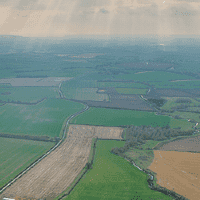The average value of farmland across Great Britain is likely to remain under some pressure in the short term due to low commodity prices (see Driver 1 – below) despite the fall in output costs and increased subsidy receipts due to the weak value of sterling.
This price pressure will be tempered by a continued low supply (see Driver 2), which will help to underpin prices in the medium to long term. In addition, we expect increasing rollover and general economic improvement in the medium term to support demand and therefore prices as shown in Figure 7.
.jpg)
.jpg)

.png)
